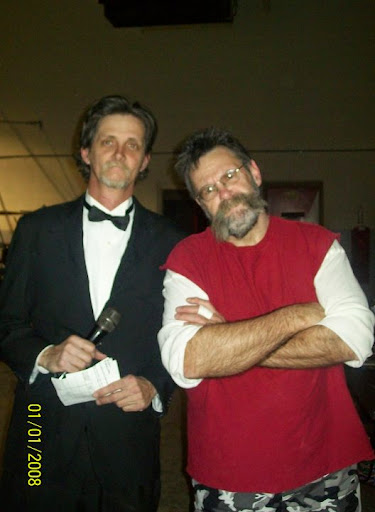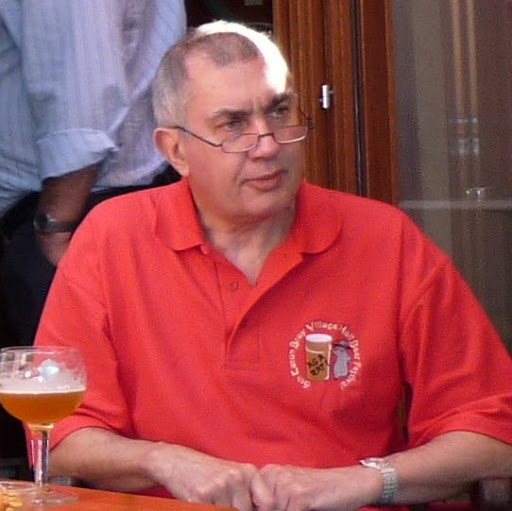Paul Michael Sharp
age ~46
from Midland, NC
- Also known as:
-
- Paul M Sharp
- Paul Micheal Sharp
- Sharp Paul Michael
- Paul Charp
Paul Sharp Phones & Addresses
- Midland, NC
- Victorville, CA
- 135 Toland Ave, West Covina, CA 91790 • 6263315279
- Ontario, CA
- Anaheim, CA
- Baldwin Park, CA
- Baldwin Park, CA
- 135 N Toland Ave, West Covina, CA 91790
Isbn (Books And Publications)

The Diplomatic Corps as an Institution of International Society
view sourceAuthor
Paul Sharp
ISBN #
0230001653



Thatcher's Diplomacy: The Revival of British Foreign Policy
view sourceAuthor
Paul Sharp
ISBN #
0312164408


Thatcher's Diplomacy: The Revival of British Foreign Policy
view sourceAuthor
Paul Sharp
ISBN #
0333658426


Resumes

Paul Sharp
view source
Owner
view sourceWork:
Sharp Paul-Plumbing
Owner
Owner

Paul Sharp
view source
Paul Sharp
view source
Paul Sharp
view source
Paul Sharp
view source
Paul Sharp
view source
Paul Sharp
view sourceName / Title
Company / Classification
Phones & Addresses
District Manager
Western Auto Supply Co.
Western Auto
Auto Parts & Supplies - New
Western Auto
Auto Parts & Supplies - New
5006 Albemarle Rd. (Str &Amp; Reg Off), Charlotte, NC 28205
5405612400, 5405612416
5405612400, 5405612416
District Manager
Western Auto Supply Co
General Auto Repair
General Auto Repair
5006 Albemarle Rd (Str & Reg Off), Charlotte, NC 28205
5006 Albemarle Rd, Charlotte, NC 28205
5405612400, 5405612416
5006 Albemarle Rd, Charlotte, NC 28205
5405612400, 5405612416
President
SHARP MARINE INDUSTRIES, INC
Sporting and Recreation Goods · Whol Sailboats · Mfg Misc Products
Sporting and Recreation Goods · Whol Sailboats · Mfg Misc Products
3419 SE Lionel Ter, Stuart, FL 34997
1631 Placentia Ave, Costa Mesa, CA 92627
830 W 16 St, Costa Mesa, CA 92627
9496429491
1631 Placentia Ave, Costa Mesa, CA 92627
830 W 16 St, Costa Mesa, CA 92627
9496429491
President
Tennador, Inc
10615 Palms Blvd, Los Angeles, CA 90034
President
BRITANNIA BUILDING SOLUTIONS, INC
Contractor Single Family Home Rehab
Contractor Single Family Home Rehab
1328 N Benson Ave #B, Upland, CA 91786
9099313252
9099313252
Managing
Britannia Renovators, LLC
Residential Real Property Renovations
Residential Real Property Renovations
1328 N Benson Ave, Upland, CA 91786
Us Patents
-
Apparatus And Method For Modifying A Musical Tone To Produce Celeste And Other Effects
view source -
US Patent:40720799, Feb 7, 1978
-
Filed:Aug 9, 1976
-
Appl. No.:5/713008
-
Inventors:Paul H. Sharp - South Pasadena CA
-
Assignee:CBS Inc. - New York NY
-
International Classification:G10H 104
-
US Classification:84 124
-
Abstract:A signal animation system for an electric organ or other electrical musical instrument which utilizes frequency-proportional detuning wherein the percentage detuning is progressive and uniform, to provide celeste and other musical effects. Detuning is accomplished by a shift register through which sampled electrical representations of an input tone signal are shifted progressively through the register from the input to the output, which delays the signal. The trigger pulses which time the shifting function are frequency-modulated in a manner such that the period of the trigger pulses, rather than their frequency is proportional to a control voltage supplied to the trigger pulse generator. In a system for producing celeste animation, a shift register in each of two channels are controlled to progressively and uniformly phase-shift the musical signal in opposite directions simultaneously on a slow cyclical basis, and to produce abrupt reversal of the direction of phase shift of the two signals substantially simultaneously so as to provide two input signals one of which is slightly musically flat and the other slightly musically sharp for substantially identical periods at the end of which the two signals are abruptly reversed so that the first becomes sharp and the other flat. This cycle is repeated as long as a note is held, and when the two signals are acoustically combined, a very pleasing celeste is produced.
-
Variable Speed Motor System
view source -
US Patent:43486258, Sep 7, 1982
-
Filed:Dec 21, 1979
-
Appl. No.:6/105952
-
Inventors:Paul H. Sharp - Pasadena CA
-
Assignee:Marmon Company - Chicago IL
-
International Classification:H02P 318
-
US Classification:318757
-
Abstract:An electronic system for controlling the speed of a shaded-pole single-phase induction motor provides increased power during speed increase and automatic braking during slowdown by regulation of half-wave D. C. braking current applied to the motor. Speed control during normal operation, and braking control during slowdown and stopping, are implemented by means of dual feedback loops interactively connected to the gate electrode of a triac in the A. C. current line of the motor. The speed control loop utilizes a frequency/phase detector to adjust the time delay of triac gating relative to the zero crossing points of each half-cycle of A. C. voltage until the tachometer-sensed speed of the motor corresponds to a desired speed set by a voltage controlled oscillator. The braking control loop adjusts the time delay of the triac gating relative to the zero crossing points of every alternate half-cycle of A. C. power thus decelerating the motor by an impressed half-wave pulsed D. C. current.
-
Universal Pulsato Unit
view source -
US Patent:42533686, Mar 3, 1981
-
Filed:Jul 1, 1976
-
Appl. No.:5/701638
-
Inventors:Donald J. Leslie - Altadena CA
Paul H. Sharp - South Pasadena CA -
Assignee:Marmon Company - Chicago IL
-
International Classification:G10H 102
G10H 104
G10K 700
G10K 1300 -
US Classification:84 124
-
Abstract:An improved mounting for an acoustic pulsato rotor for suppression of spurious sounds utilizes a spring bias for axial thrust between the shaft ends and bearing cups. In one form, a plurality of thin spider legs extend from a rotor mounting panel in surrounding relationship to the rotor to provide the spring characteristics while being acoustically transparent to the sound radiation pattern that sweeps past. The spider legs have a quick fit, anti-noise twist lock connection to a central hub. Improved rubber-like grommets provide anti-shock and anti-noise mounting for the shaft. Improved rubber-like grommets in cooperation with a two part motor mounting provide anti-shock and anti-noise motor mounting without sacrifice of simple belt tension adjustment capability. A light weight back enclosure for the speaker acquires sound isolation characteristics of a sturdy structure by imposing stress on the enclosure.
-
Stereophonic System For Electronic Organs
view source -
US Patent:46228780, Nov 18, 1986
-
Filed:Apr 18, 1985
-
Appl. No.:6/724441
-
Inventors:Paul H. Sharp - Fullerton CA
-
Assignee:CBS Inc. - New York NY
-
International Classification:G10H 102
G10H 700
H04R 500 -
US Classification:84 124
-
Abstract:A stereophonic electronic organ system having two electrical-acoustic channels each including a loudspeaker separated from the other, note generating means for producing for each note in a musical range two time-displaced electrical signals of substantially the same frequency corresponding to the note, and means for coupling one of the two signals for each note to one of the channels and means for coupling the other of the two signals to the other of the two channels. The two time-displaced signals for each note may be produced by providing two digital tone generators for each note and time-displacing one note from the other.

Paul Simon Sharp
view source
Paul Sharp
view source
Paul T Sharp
view source
Paul Christopher Sharp
view source
Paul Micheal Sharp
view source
Paul David Sharp
view source
Paul David Sharp
view source
Paul Sharp
view sourceMyspace
Googleplus

Paul Sharp
Work:
DragonMaster Inc - Owner
Education:
Colonial High School

Paul Sharp
Work:
US ARMY - SGM

Paul Sharp

Paul Sharp

Paul Sharp

Paul Sharp

Paul Sharp

Paul Sharp
About:
Hi, I'm Sharpy. My posts should let you know what's happening here and any other cool features.
Flickr
Youtube
Classmates

Paul Sharp
view sourceSchools:
River North Academy Macon GA 1976-1980
Community:
Dawn Orr, Thom Pinkston, Melissa Tolbert, Donny Cameron

Paul Sharp
view sourceSchools:
Caledonia Senior Secondary School Terrace Saudi Arabia 1991-1995
Community:
Jim Gould, Heather Doell, Charlotte Enlow

Paul Sharp
view sourceSchools:
Robert E. Lee Freshman High School Midland TX 1959-1963
Community:
Cathy Counts, Mario Olgin, Kara Thomas

Paul Sharp
view sourceSchools:
Williston High School Williston FL 1975-1979
Community:
Bob Barker, Rod Buhagiar, Carolyn Teijeiro

Paul Sharp
view sourceSchools:
Twila Reed Elementary School Anaheim CA 1974-1978
Community:
Michael Foster

Paul Sharp
view sourceSchools:
Oil City High School Oil City PA 1977-1981
Community:
Anthony Lange, James Nichols, Benny Esparza, William Fillgrove

Paul Sharp
view sourceSchools:
Meigs High School Pomeroy OH 1988-1992
Community:
Kelly Chapman, Melinda Barnett

Paul Sharp
view sourceSchools:
White Oaks High School Oakville Morocco 1980-1984
Community:
Michael Labencki, Richard Cooney, Joel Mcewan
Plaxo

Paul Sharp
view sourceBusiness Manager at Univar
Commercial Manager South West Europe at Celanese Emulsions GmbH
Key Account Manager at DOW Chemical

Paul Sharp
view sourcePittsburgh, PADirector, Industry Solutions/International at Savi...

Paul Sharp
view sourceReadingHSBC
Get Report for Paul Michael Sharp from Midland, NC, age ~46

















